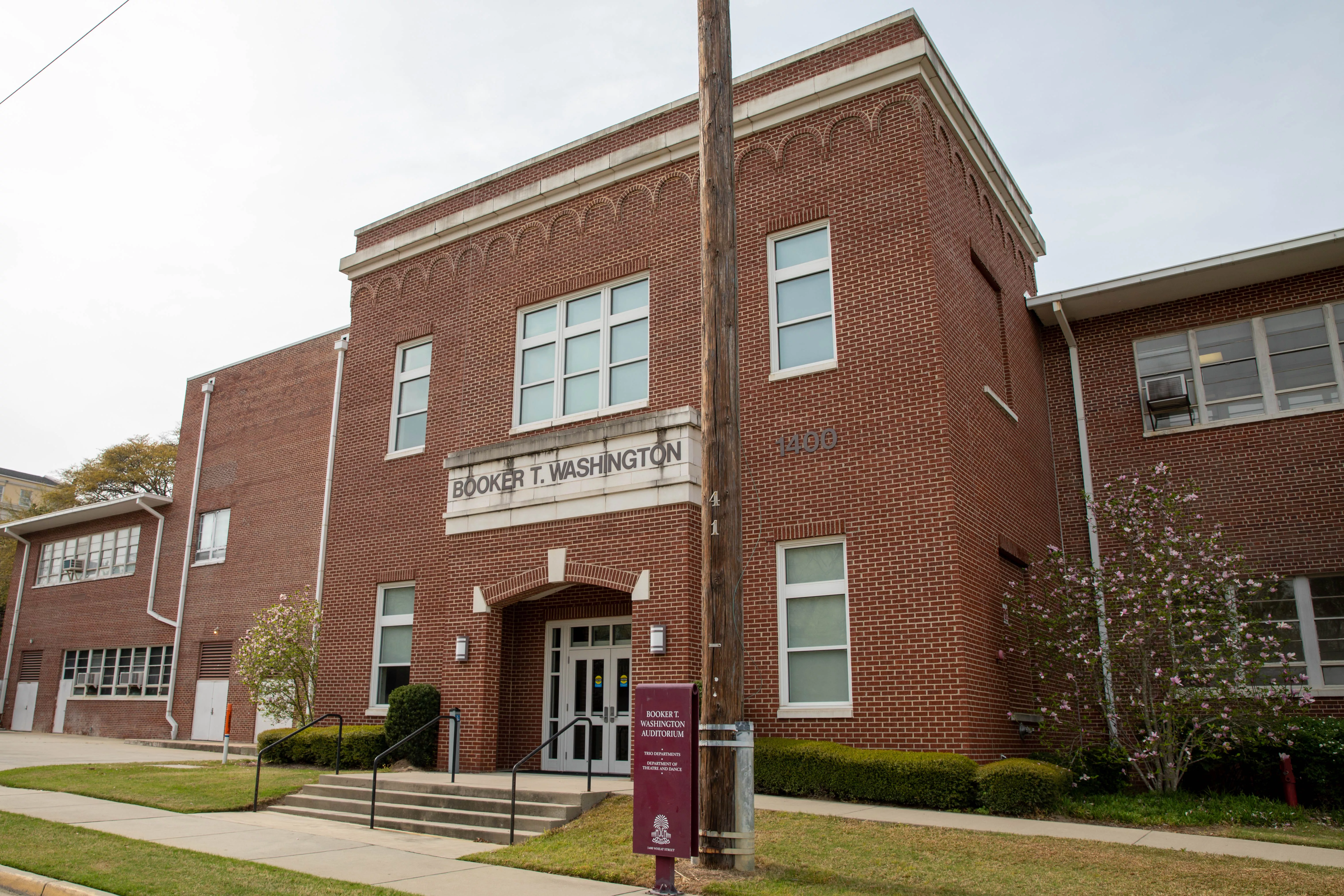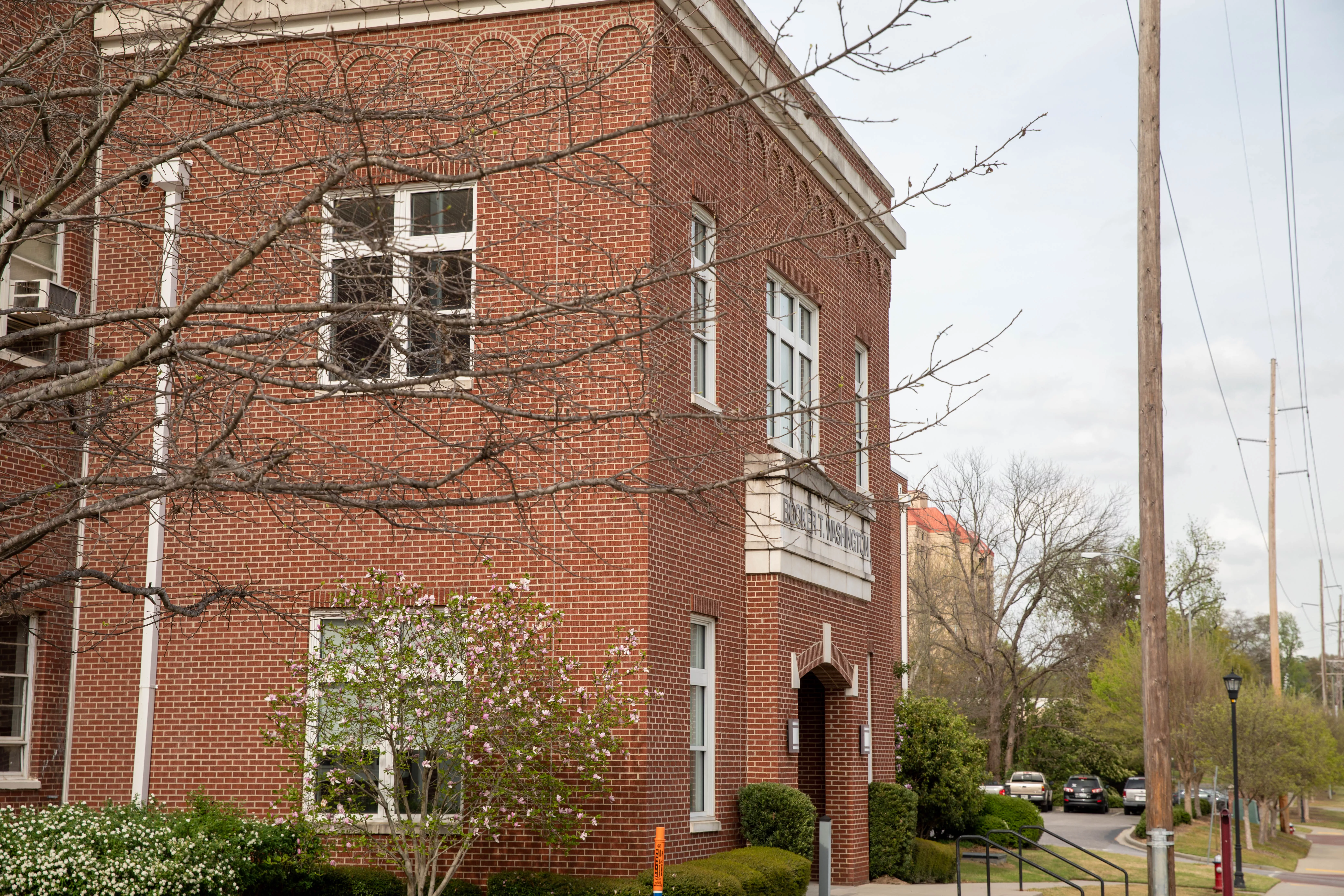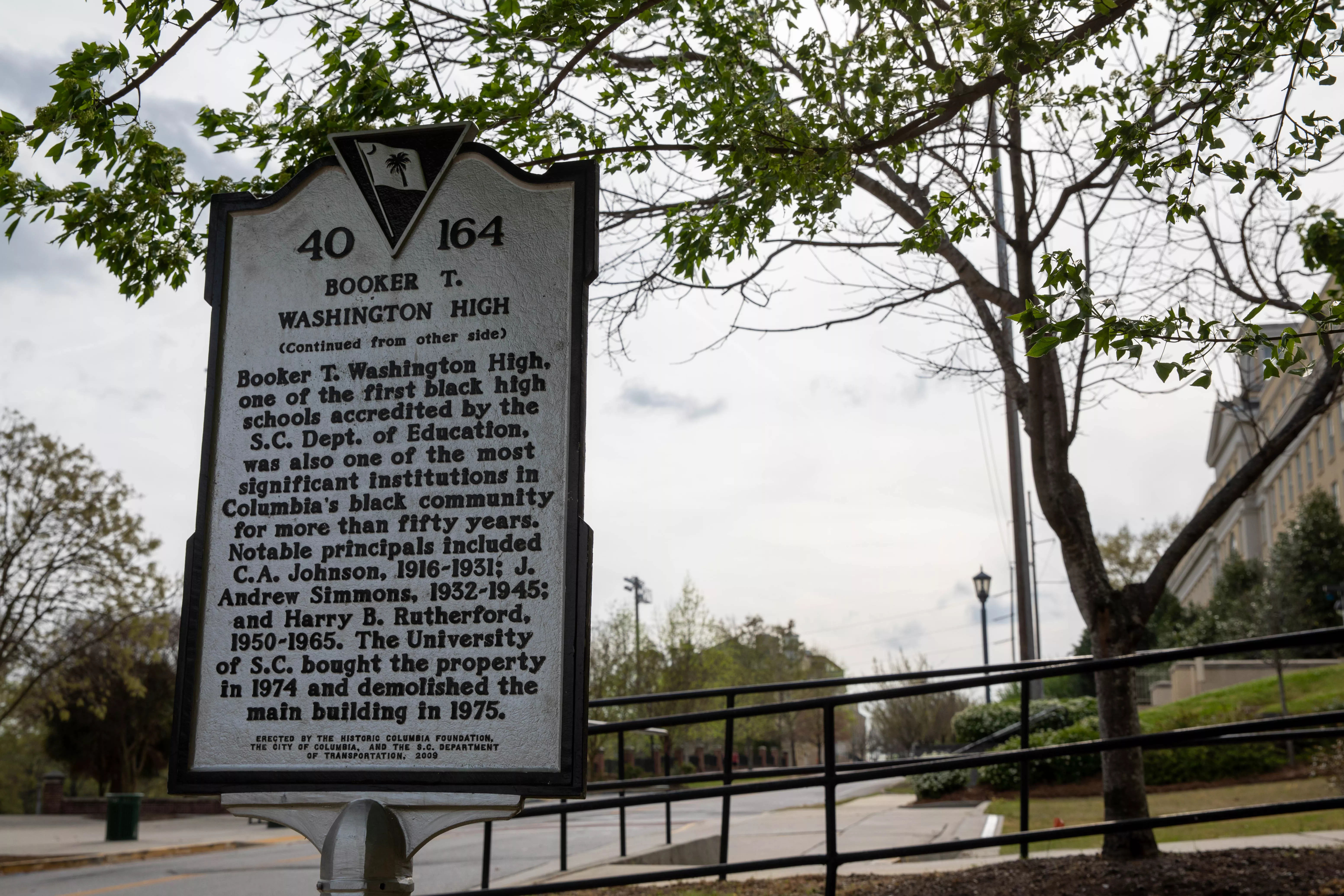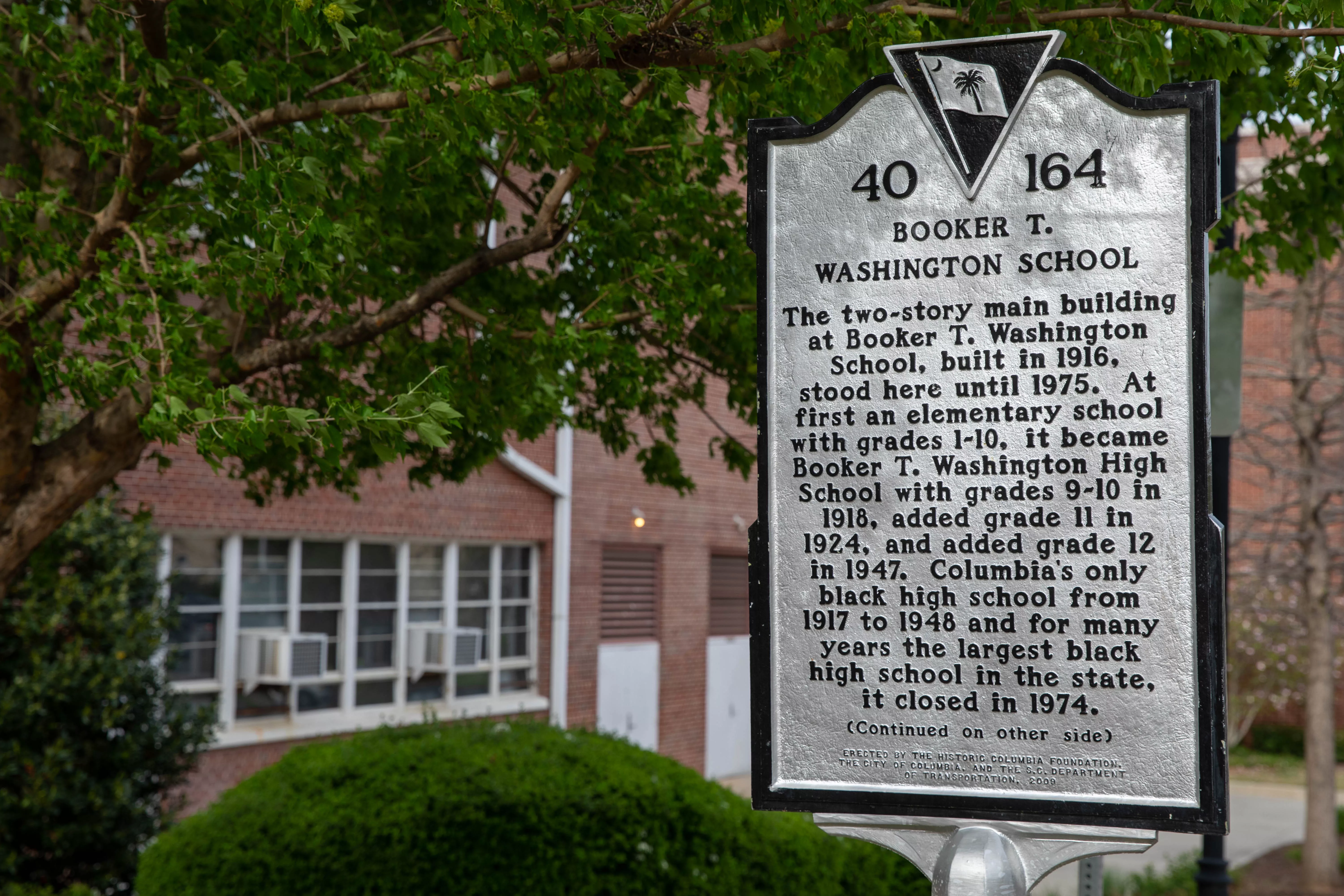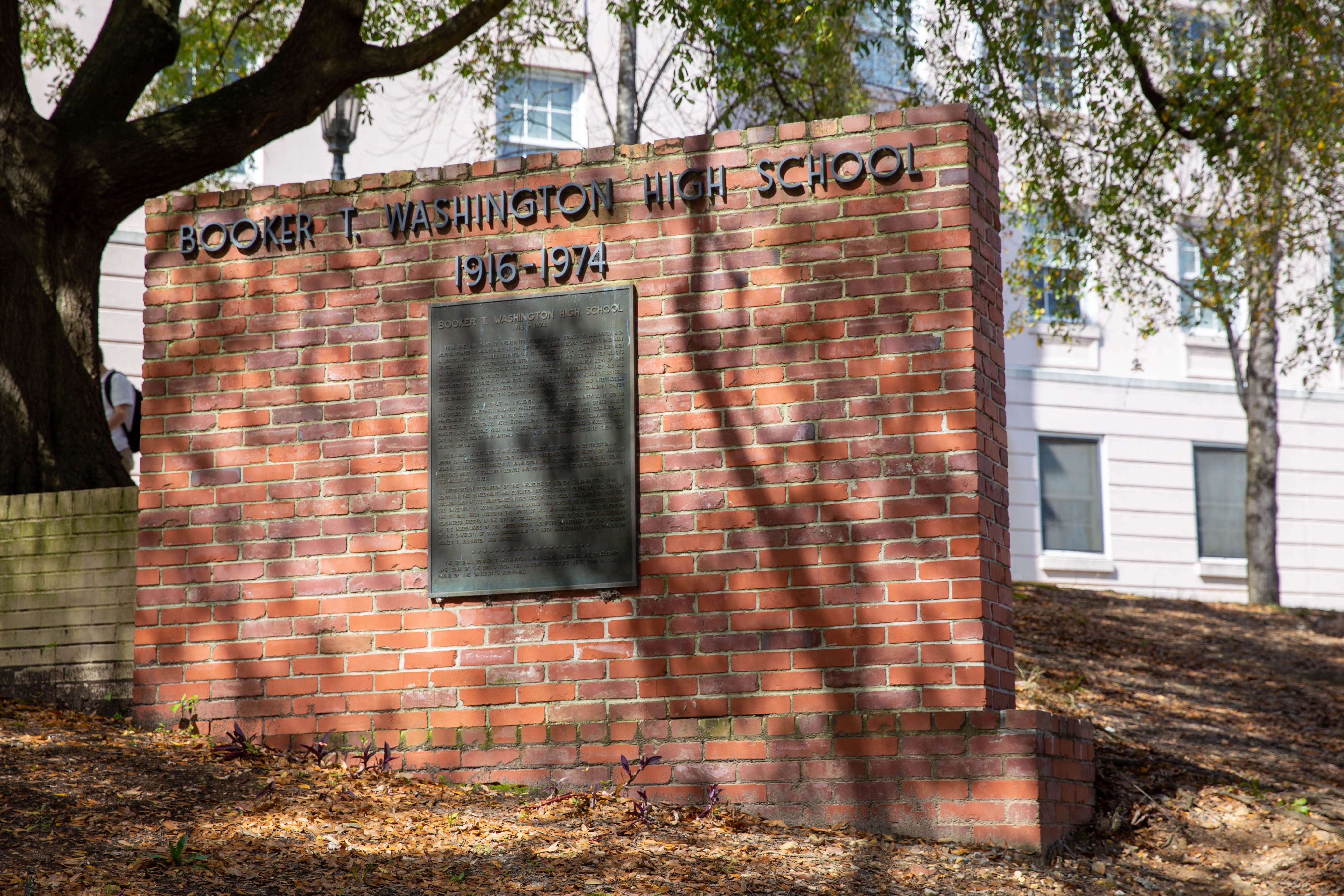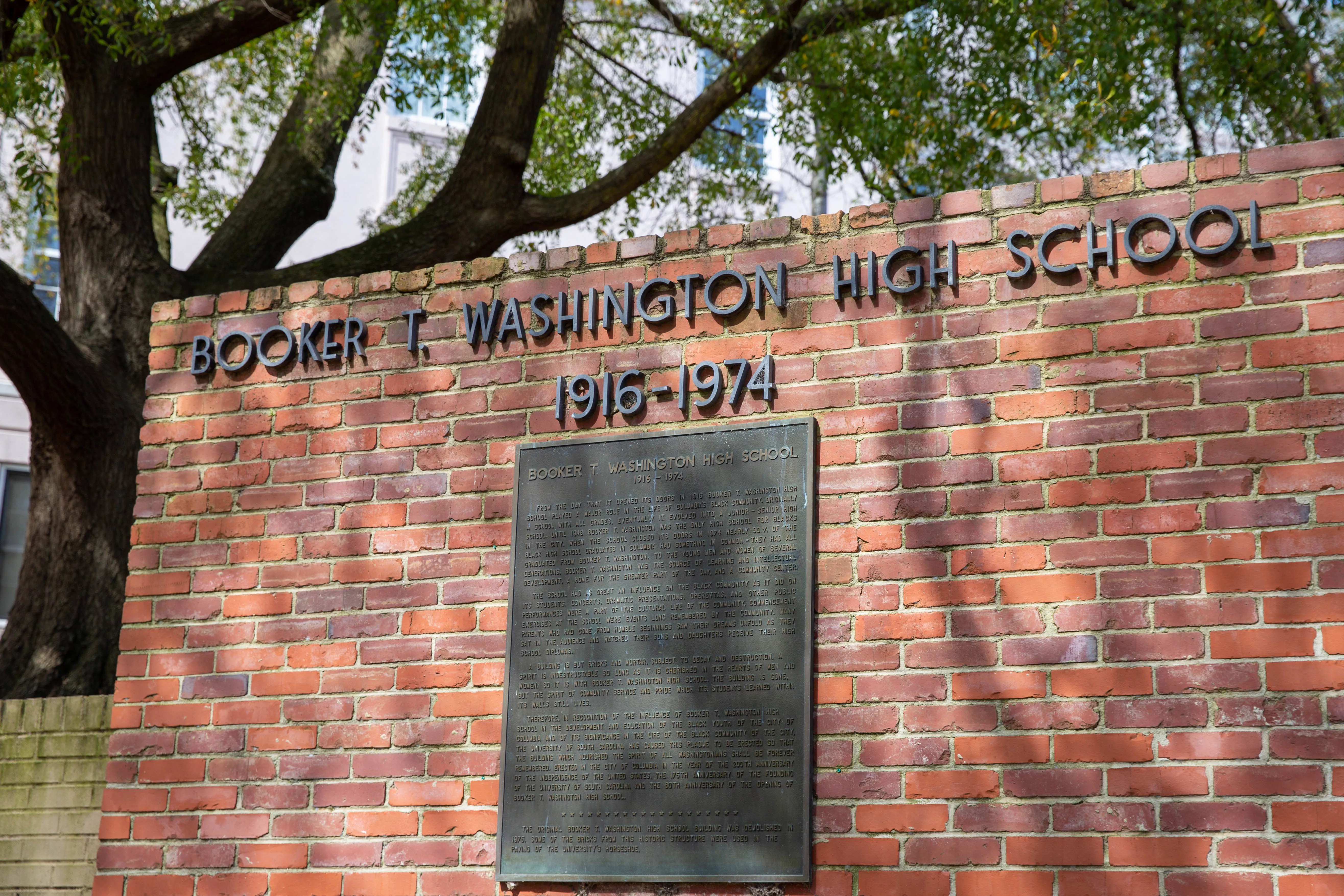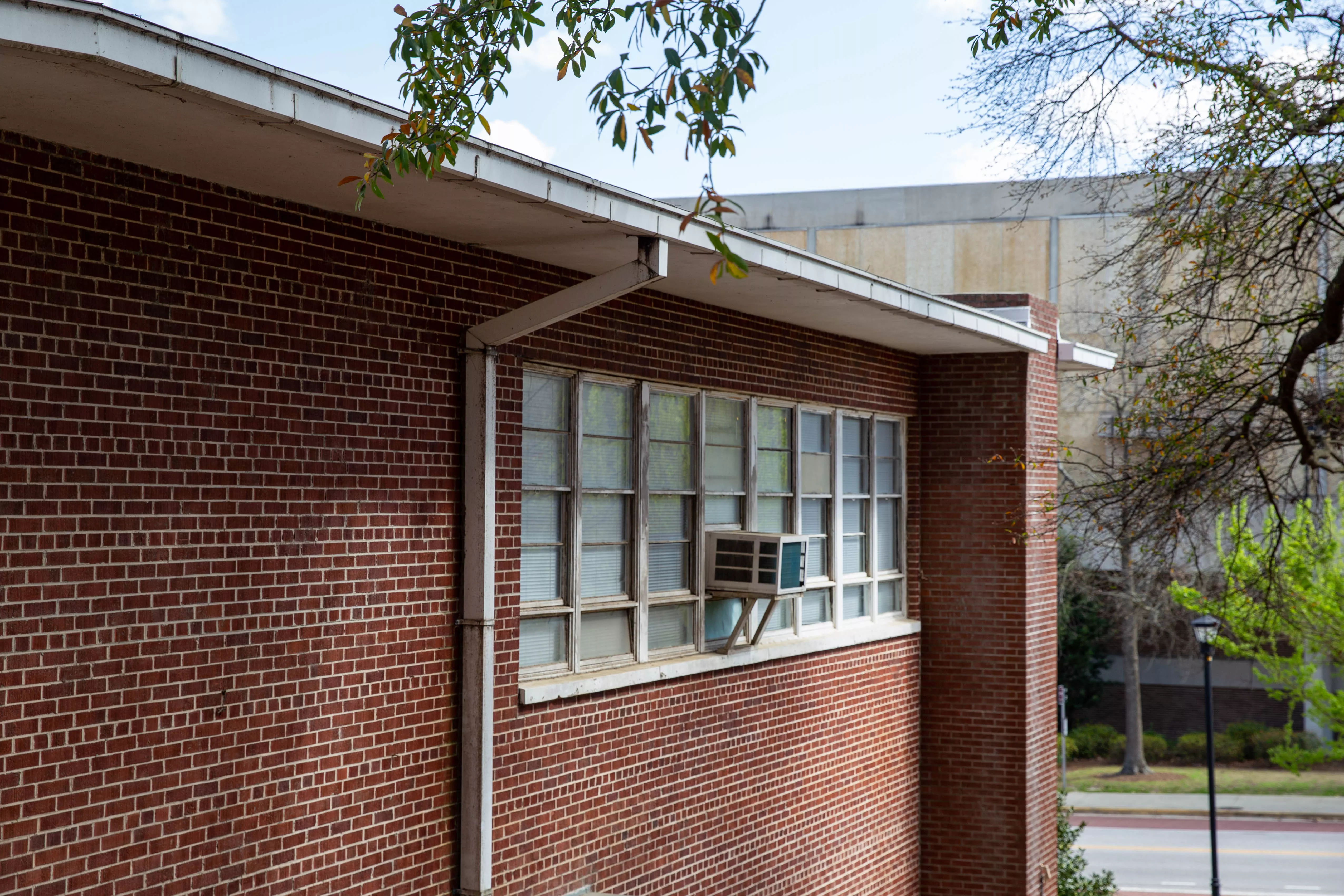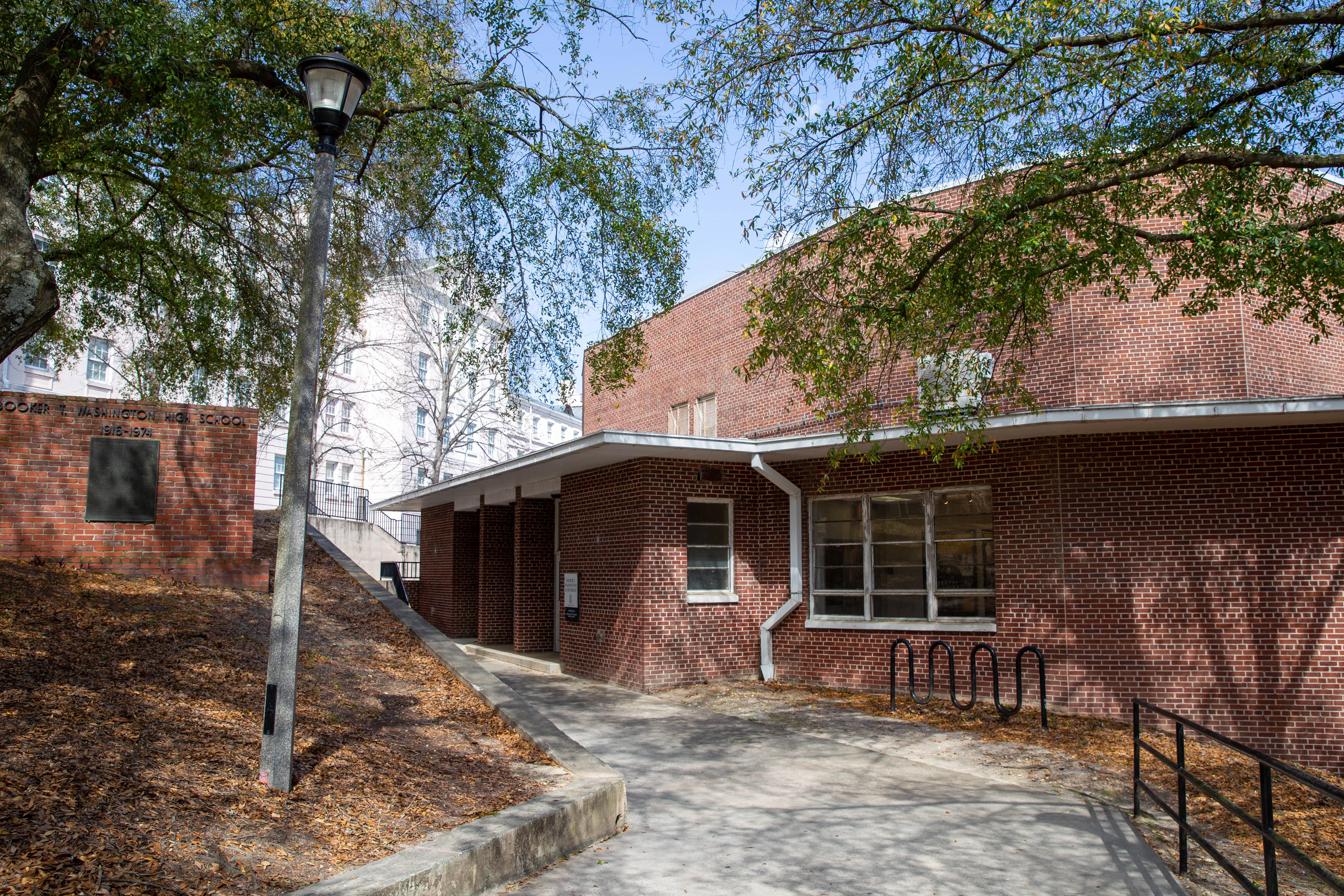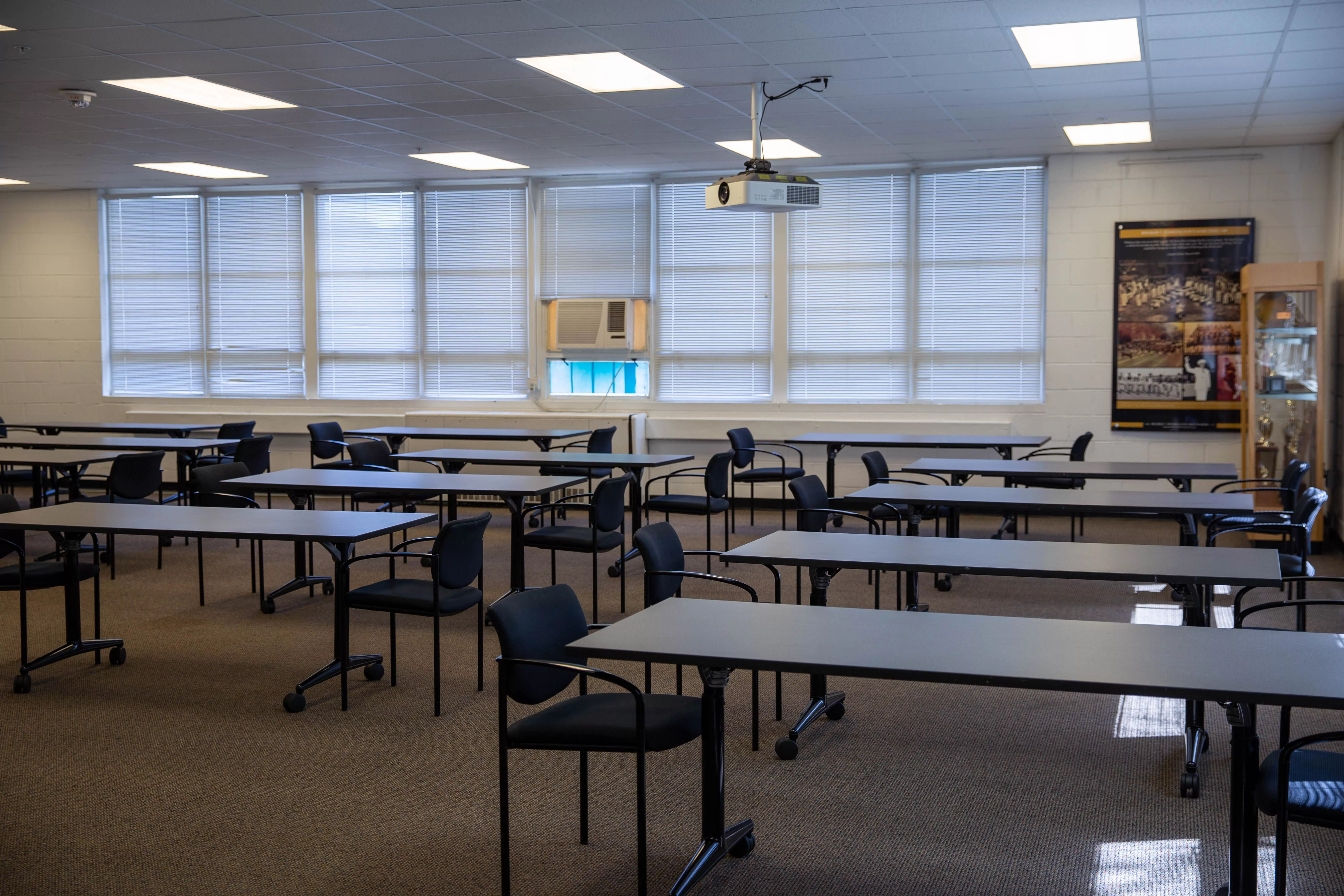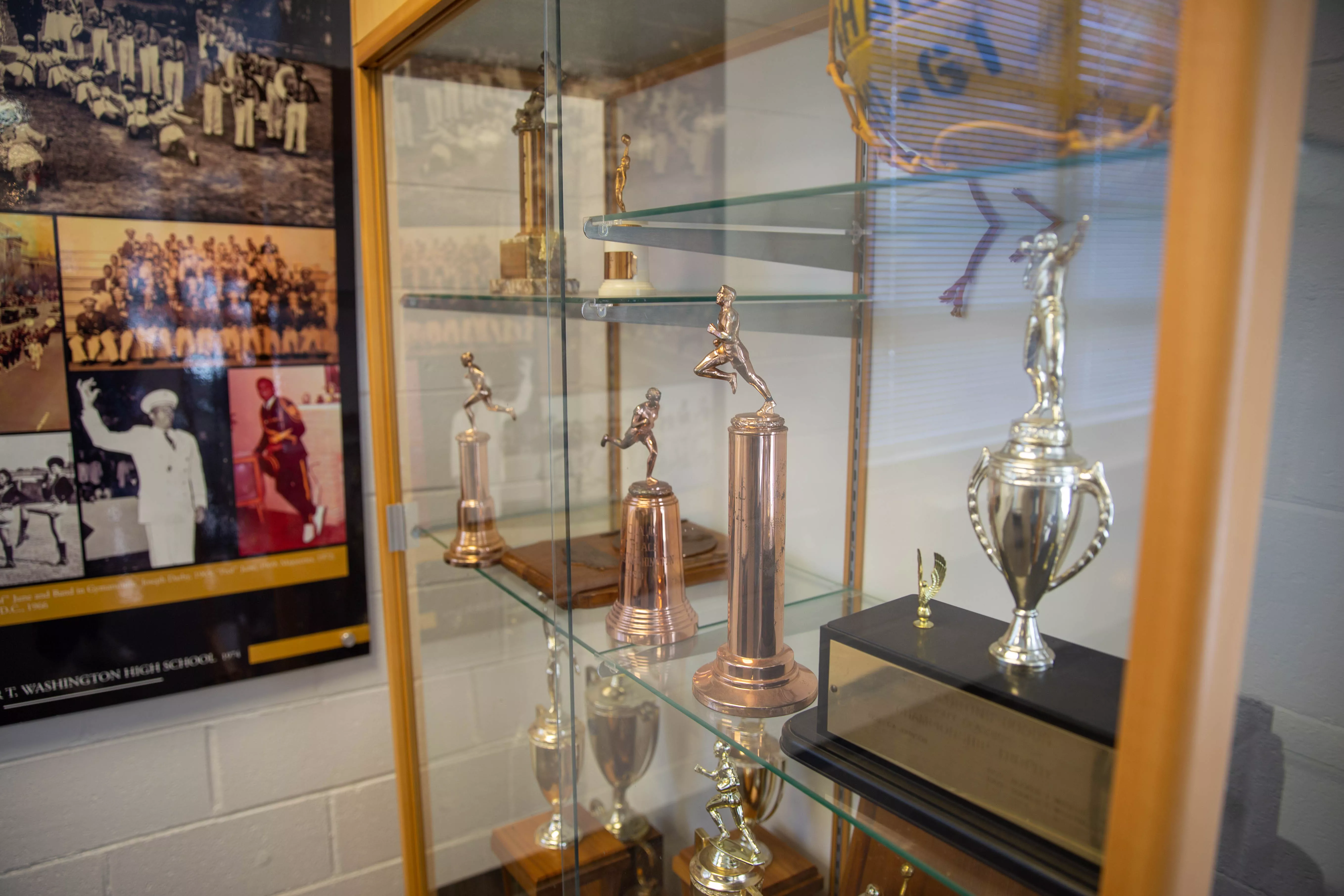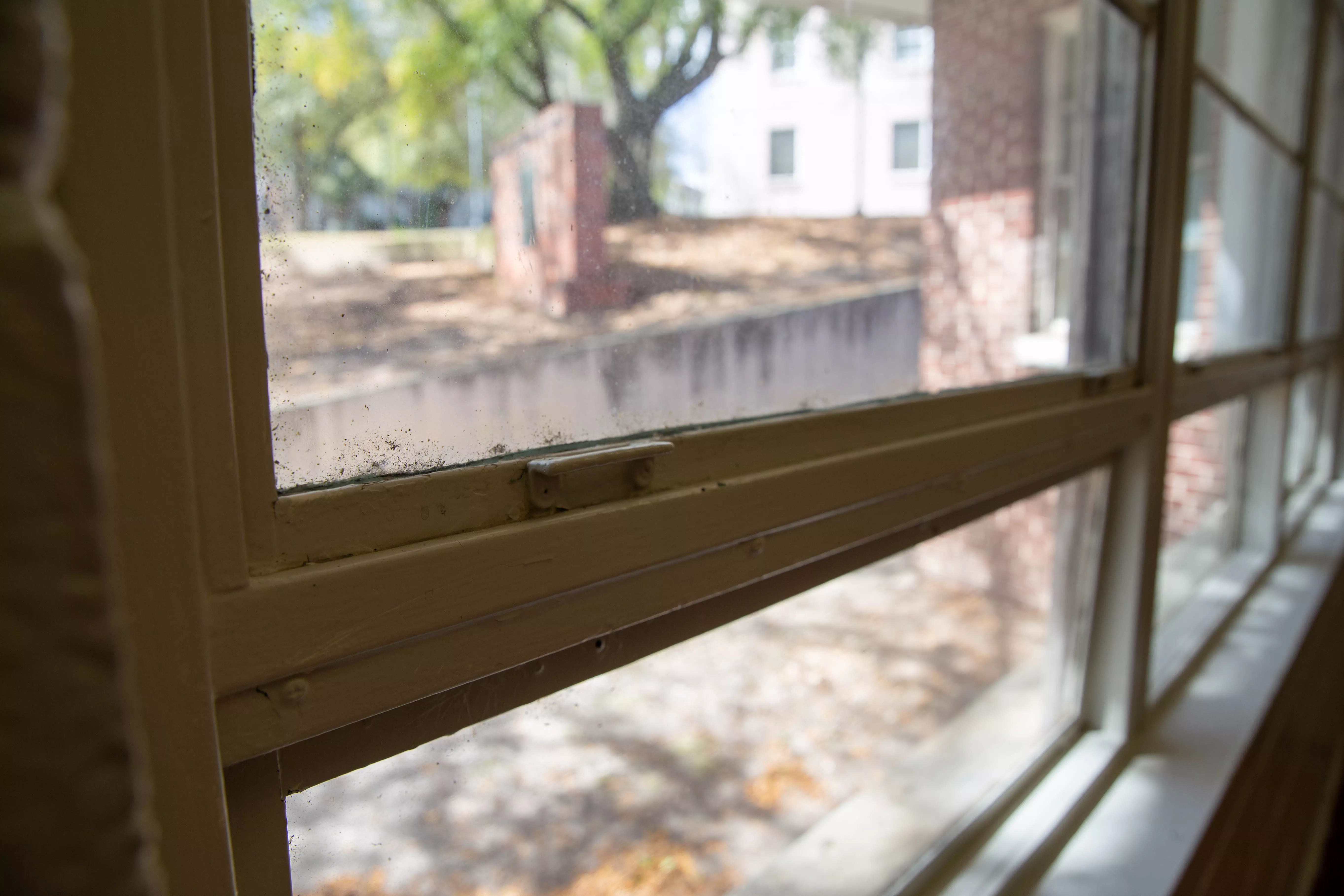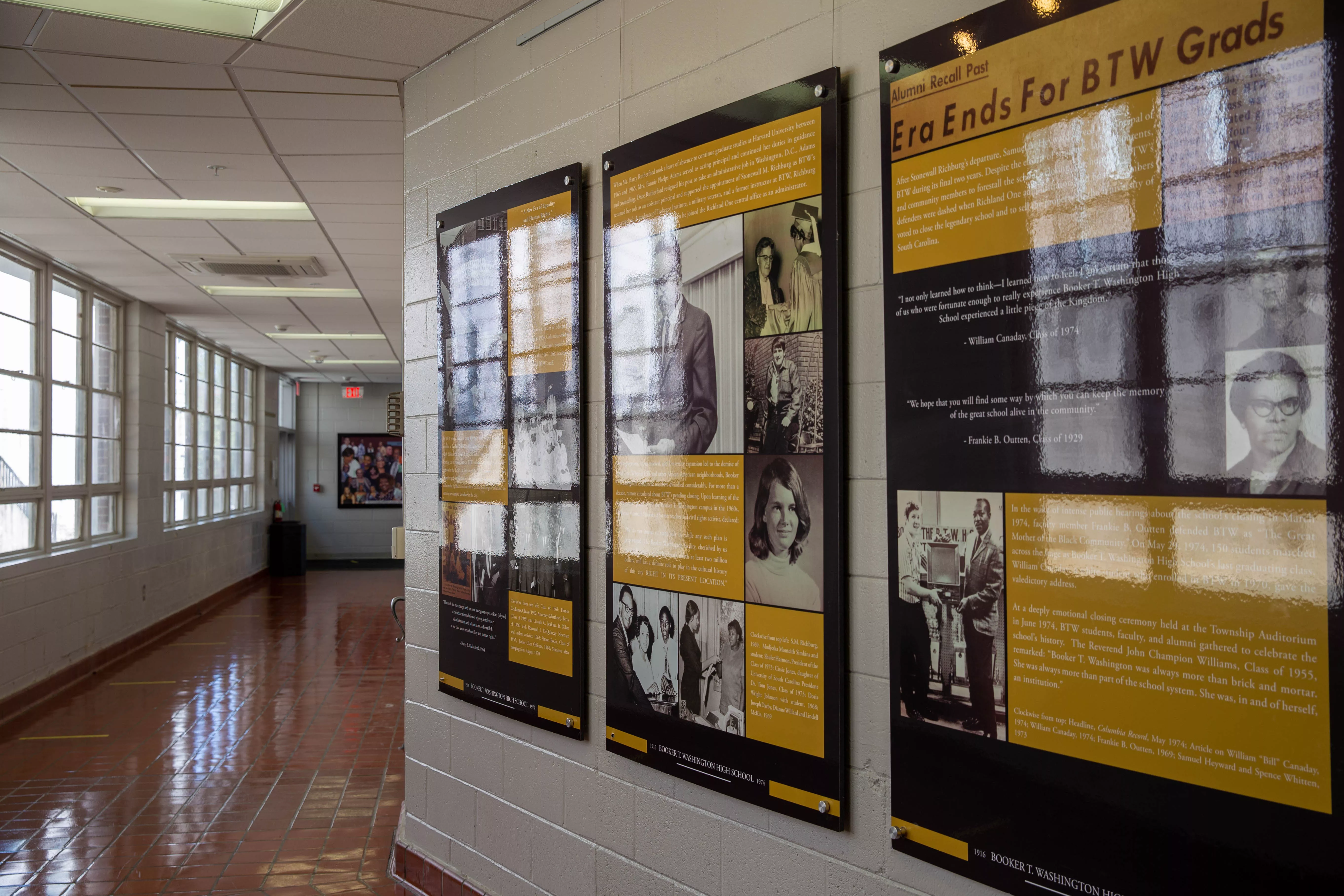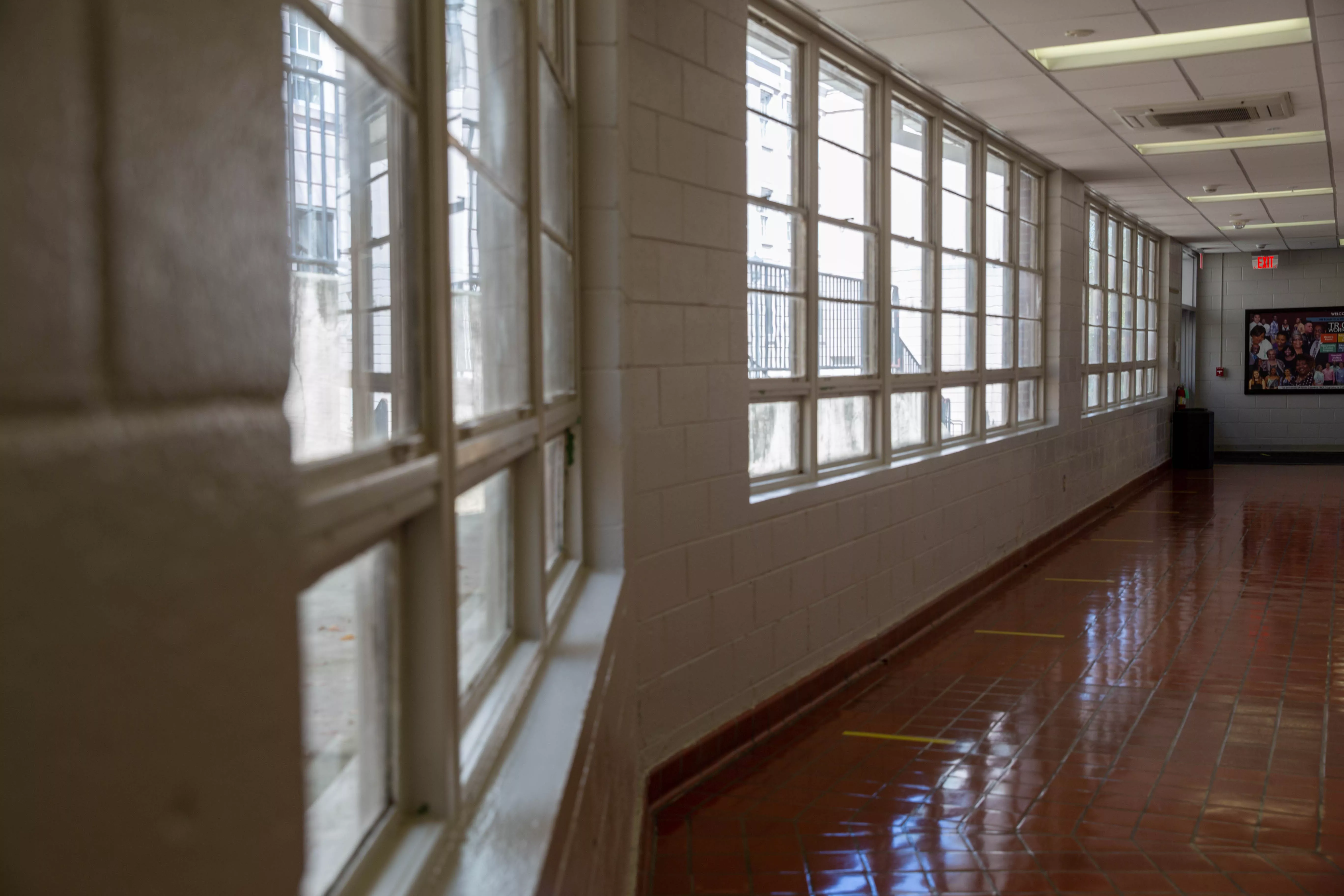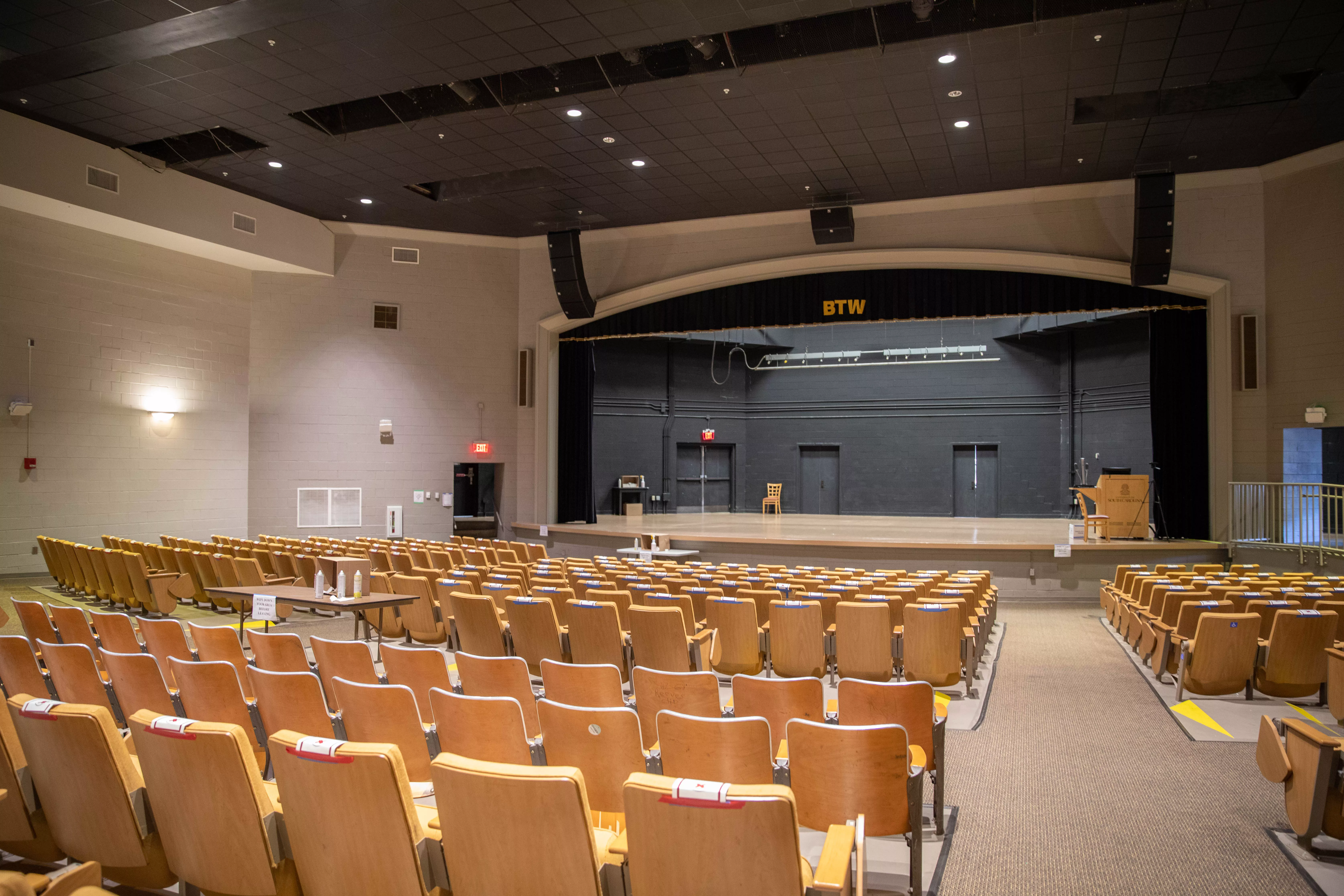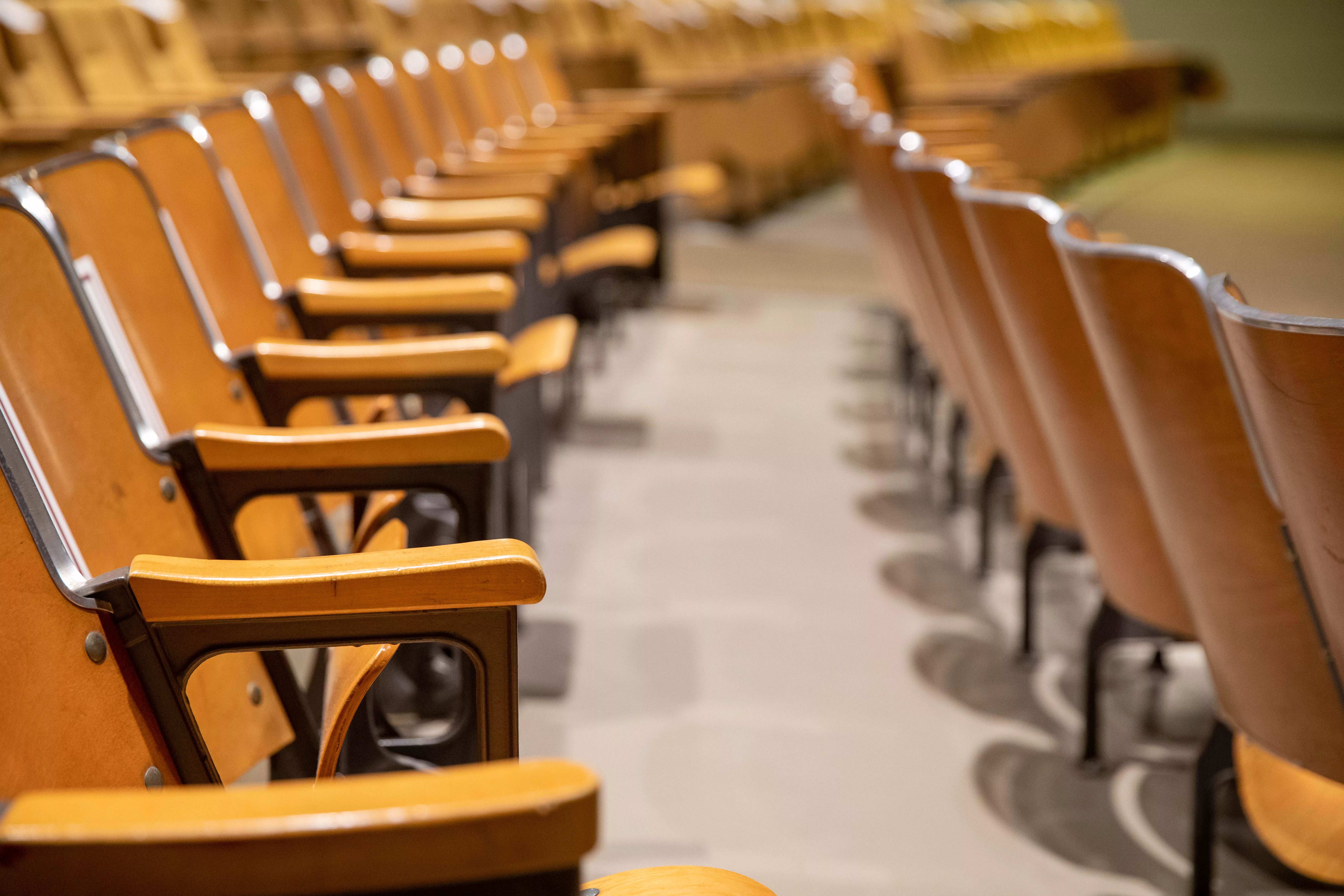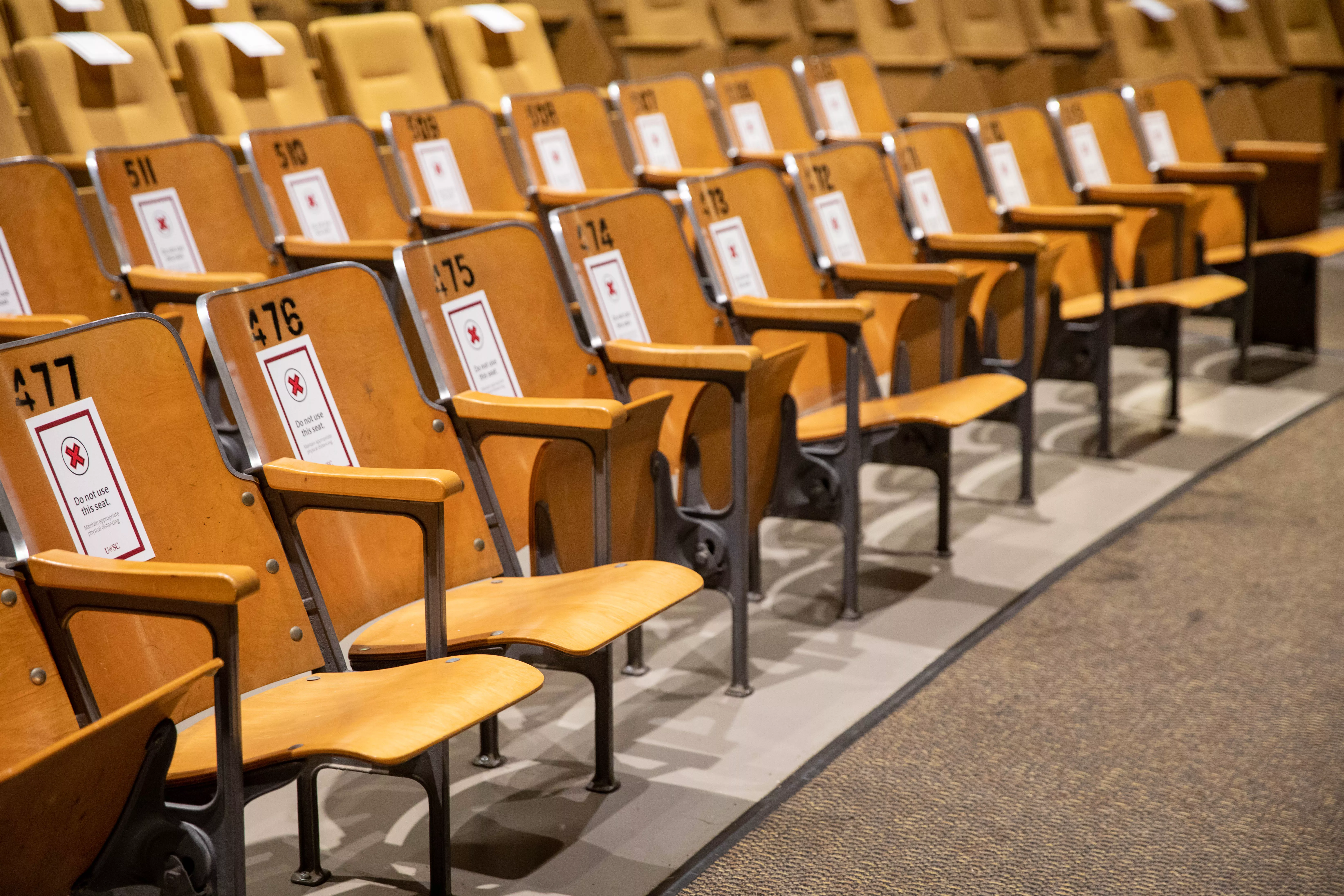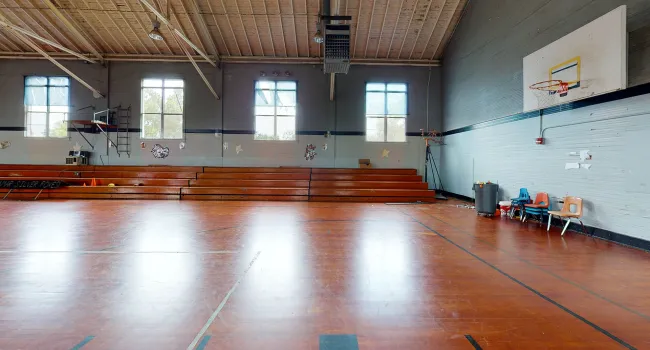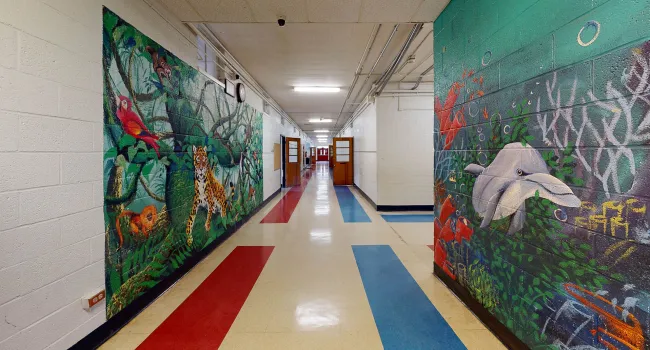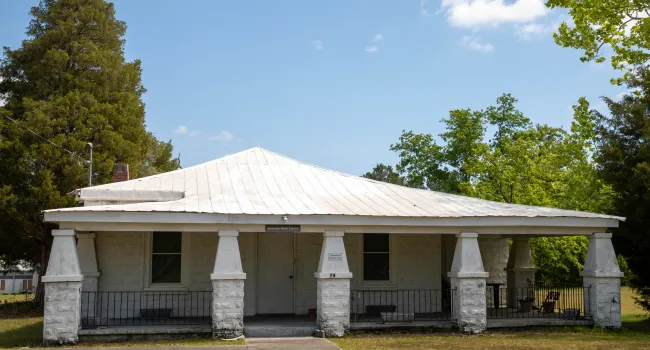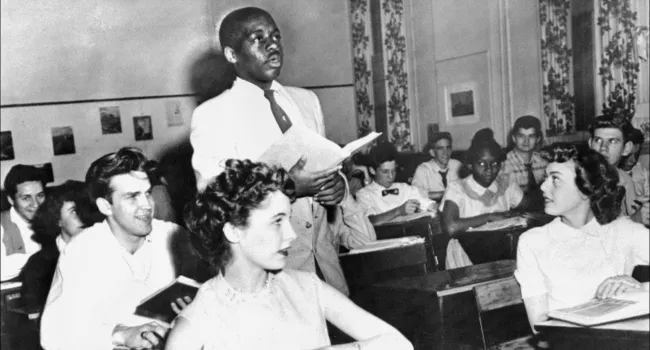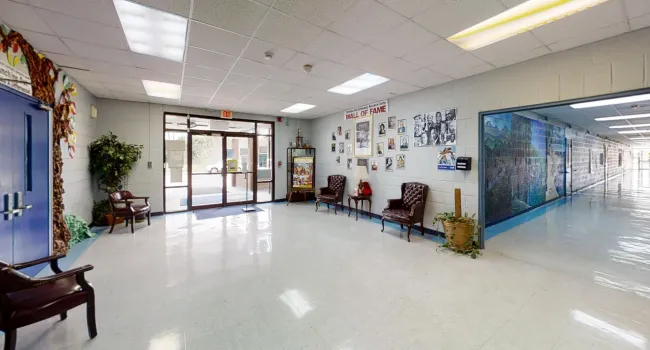The Booker T. Washington Auditorium Building is the last extant building of Booker T. Washington High School in Columbia, South Carolina. The school opened in 1916 and became an important institution for the African American community in Columbia and across South Carolina. The Auditorium Building was constructed in 1956 using state funds dedicated to equalizing African American schools across South Carolina, which the state government hoped would forestall a push toward integrated schools. From 1956 until 1970, the auditorium served the segregated high school. When Booker T. Washington High School and other schools in Richland District One integrated in 1970-71, the Auditorium Building continued to function as the school’s auditorium, classroom spaces for music and theater classes, and the shop classrooms for vocational education. The auditorium was also used for a number of public events that brought together the school and local Columbia community. The building’s period of significance ends in 1970, when Richland District One when a series of court cases finally forced public schools in South Carolina to implement plans for racial integration.
Included in this photo gallery are the following:
- Exterior looks at the original Booker T. Washington Auditorium Building
- South Carolina Historical Marker located outside of the school
- Inside the Booker T. Washington Auditorium
- Athletic trophies earned by Booker T. Washington High School
- Glimpses down the hallways
- A look into a classroom
Standards
- 5.4.CC Analyze the continuities and changes of race relations in the United States and South Carolina following the Supreme Court decisions of Briggs v. Elliott and Brown v. Board of Education.
- 8.5.CX Analyze the correlation between the Modern Civil Rights Movement in South Carolina and the U.S.
- This indicator was designed to foster inquiry into the role of South Carolina in the Modern Civil Rights Movement, to include the influence of court cases such as Briggs v. Elliot and Flemming v. South Carolina Electric and Gas. This indicator was also developed to promote inquiry into the relationship between national leadership, protests, and events and South Carolina leadership, protests and events, such as the Friendship Nine and the Orangeburg Massacre.
- 8.5.E Utilize a variety of primary and secondary sources to analyze multiple perspectives on the cultural changes in South Carolina and the U.S.
- USHC.5.CC Evaluate continuities and changes during the Civil Rights Movement and other subsequent movements for equal rights.
- This indicator was developed to promote inquiry into thematic continuities and changes into how marginalized groups sought and won legal rights. Inquiry into the leadership, methods, and outcomes of modern equal rights movements are supported by this indicator.
Resources
You need to be logged in to listen to view this content. Create an account now; it's quick, easy, and free!
Log In to View